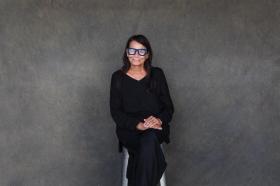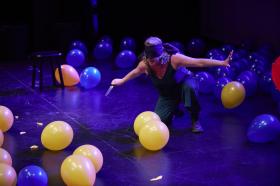Photo credit: Gregory Lorenzutti
Every four years the arts sector is thrown into a frenzy of strategic planning, as organisations begin to contest state and federal multi-year funding programs, through applications that primarily focus on direction setting. Not only do organisations stop at this time to do a stocktake on relevance, engagement and viability; they also consider ambitious pivots that can send organisations into new terrains of creative exploration.
Strategic direction for arts organisations can be informed by both internal and external considerations, but this year, Multicultural Arts Victoria is calling on arts leaders to think about how they are using strategic planning to build capacity for increased diversity; in audiences, in governance, in programming, in relationships and across the workforce.
The call for increased diversity is not new in the arts. We’ve been having this conversation for a long time, but the pace of change is glacial. The frustration felt by culturally diverse creatives and communities is matched only by the hand-wringing helplessness of well-intentioned arts leaders who are unsure about how to create a culture of inclusion within their respective organisations.
One possible answer is that conversations about diversity are still relegated to the domain of organisational values. Who is going to disagree with the values of inclusion, equality and fairness, that underpin a desire for increased diverse representation? The problem is these values envelope the conversation in a miasma of complacency, where we are all in fervent agreement about the need for change but have no route to get there.
Instead, these conversations need to sit within the fraught nexus of priorities and resources. This is a planning conversation, where the question of what we are going to do meets the challenge of how we are going to do it. To assist organisations to move from rhetoric into action, Multicultural Arts Victoria has this week embarked on a new campaign, #DiversifyYourArts, with tips for strategic planning that place diversity as a central consideration.
Planning for diversity requires organisations to be able to have critical conversations about their own relationship to power and privilege.
We begin with shifting the dial on who benefits from diversity initiatives. Yes, it is absolutely about removing the barriers to cultural participation by culturally diverse and disabled people, but it’s for the benefit of everyone. The advantages of an arts sector that truly represents our community flow to all of society through measures of cultural innovation, engagement, sustainability, and social cohesion.
Programming diverse artists is a great place to start. There is an abundance of evidence to show that diverse programming is good for organisations, enabling them to reflect contemporary narratives that deal with the complexities of our identity. Cultural practices from our diasporic and new migrant and refugee communities are similarly multifaceted and defy pigeon-holing as over-simplified manifestations of old traditions. The dynamic cultural practices within our multicultural society are the experimental playgrounds of experienced creatives with deep connections into communities.
Beyond that, we recognise that planning for action requires experience and knowledge. In this, we urge organisations to prepare for this work by training with legitimate representatives of diverse communities, creating opportunities for diverse creatives to actively lead the agenda and making a commitment to self-determined processes that empower artists and communities. Planning for diversity also requires organisations to be able to have critical conversations about their own relationship to power and privilege, and how these forces may be acting to perpetuate exclusion and disadvantage. These are difficult conversations, where one is forced to confront one’s unconscious bias.
The value of a diverse workforce cannot be underestimated when building a culture of inclusion and appealing to diverse markets. The business sector is running with this while the arts sector is dragging its heels. But take care that you’re not putting all the responsibility for your change agenda on one “champion”. Not only is this an uncomfortable and untenable position to place someone in, but it is destined to fail. Responsibility for diversity strategies should fall to everyone in the organisation, but especially executives and boards. Diversity and inclusion, like strategy, are products of leadership.
Another feature of strategic plans are measures of success – so, count what matters. If you have diversity as a key attribute of your vision, how are you going to know if you have succeeded? The forming of organisational KPIs is essential in moving this agenda to a priority setting in your organisation. Again, call on representatives of diverse communities to help you formulate your plan and your KPIs. If resources are finite, you could be wasting a whole lot of money second guessing what diverse artists and communities think are important.
The key take-away message is plan for action. We wish organisations much success in the contest for funds, and urge everyone to think about how you will build diversity into your planning so that in the next four year cycle, we can tell a different story. And who knows, maybe we can stop writing articles about what the sector can do to build in diversity, because we are too busy talking about how amazing it is to be part of a diverse arts ecology.
Click here to see the top ten tips for including cultural diversity in your strategic plan.





